
How to Use photon 2: Examples, Pinouts, and Specs
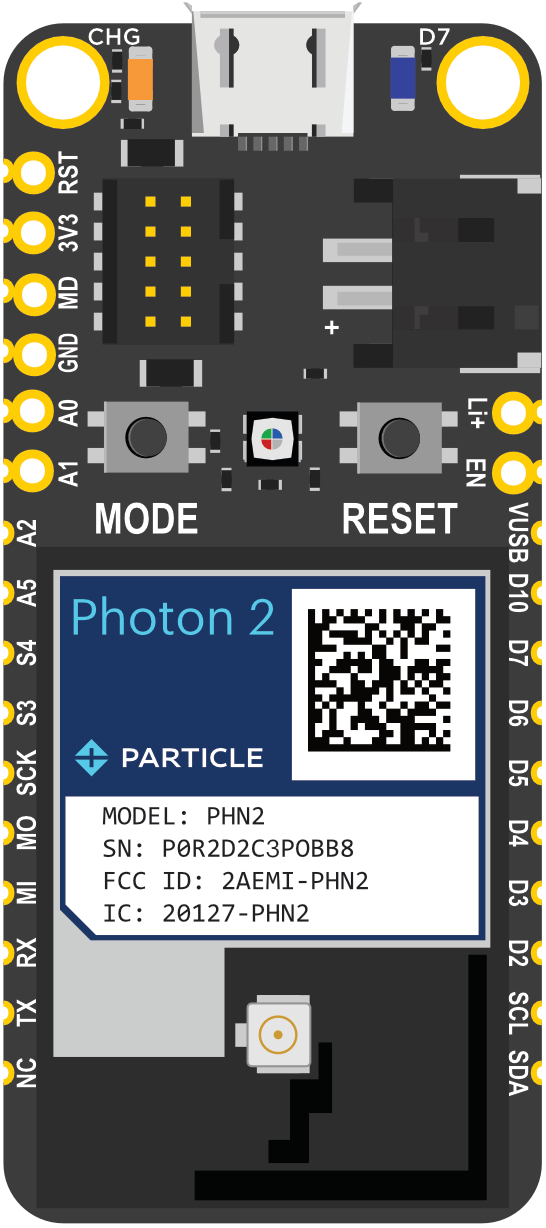
 Design with photon 2 in Cirkit Designer
Design with photon 2 in Cirkit DesignerIntroduction
The Photon 2, manufactured by Particle, is a versatile Wi-Fi development kit designed for creating connected projects and products. It integrates a powerful microcontroller, a Wi-Fi module, and cloud connectivity, making it an ideal choice for Internet of Things (IoT) applications. Whether you are a hobbyist or a professional developer, the Photon 2 provides a robust platform for building and deploying connected devices.
Explore Projects Built with photon 2
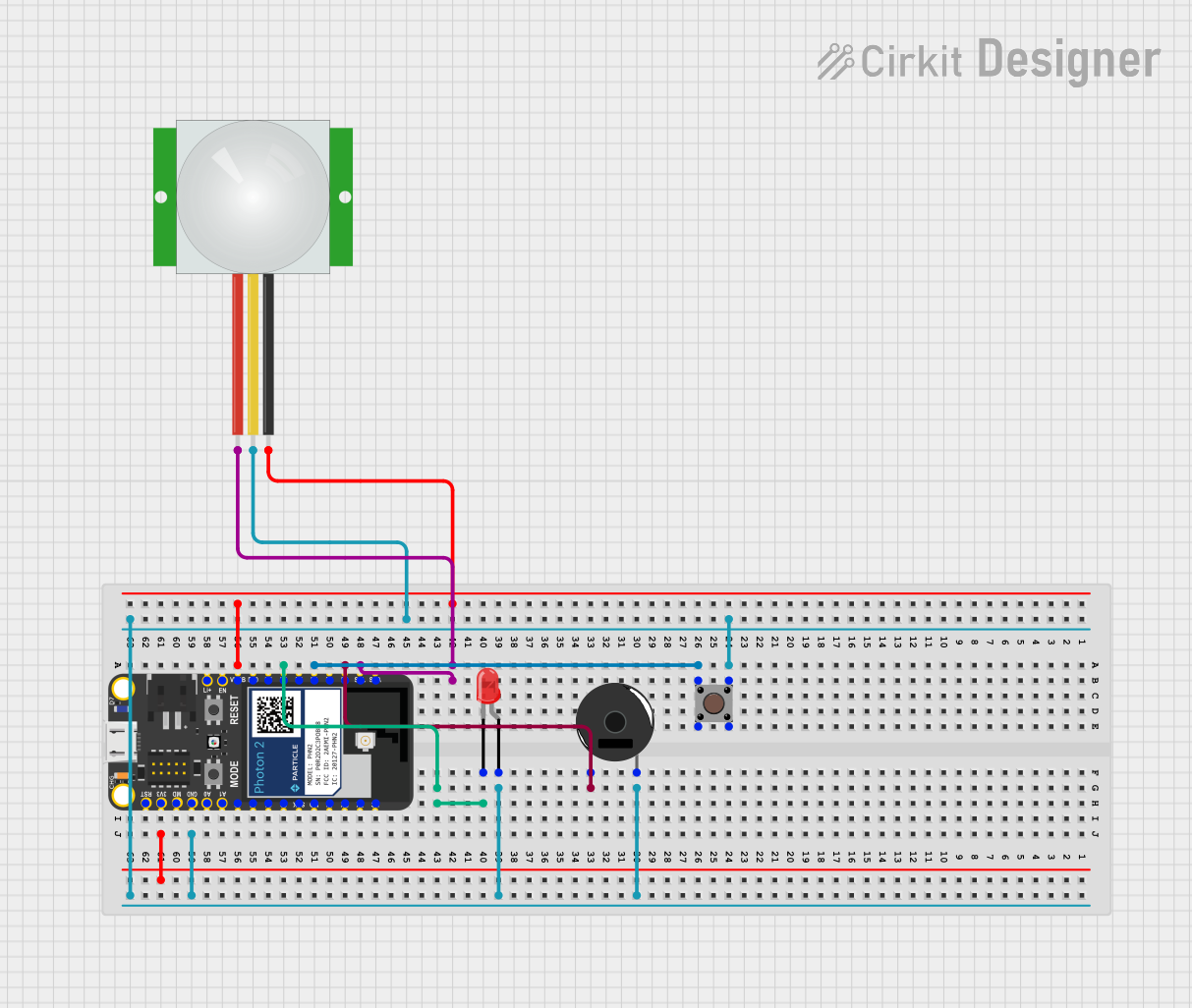
 Open Project in Cirkit Designer
Open Project in Cirkit Designer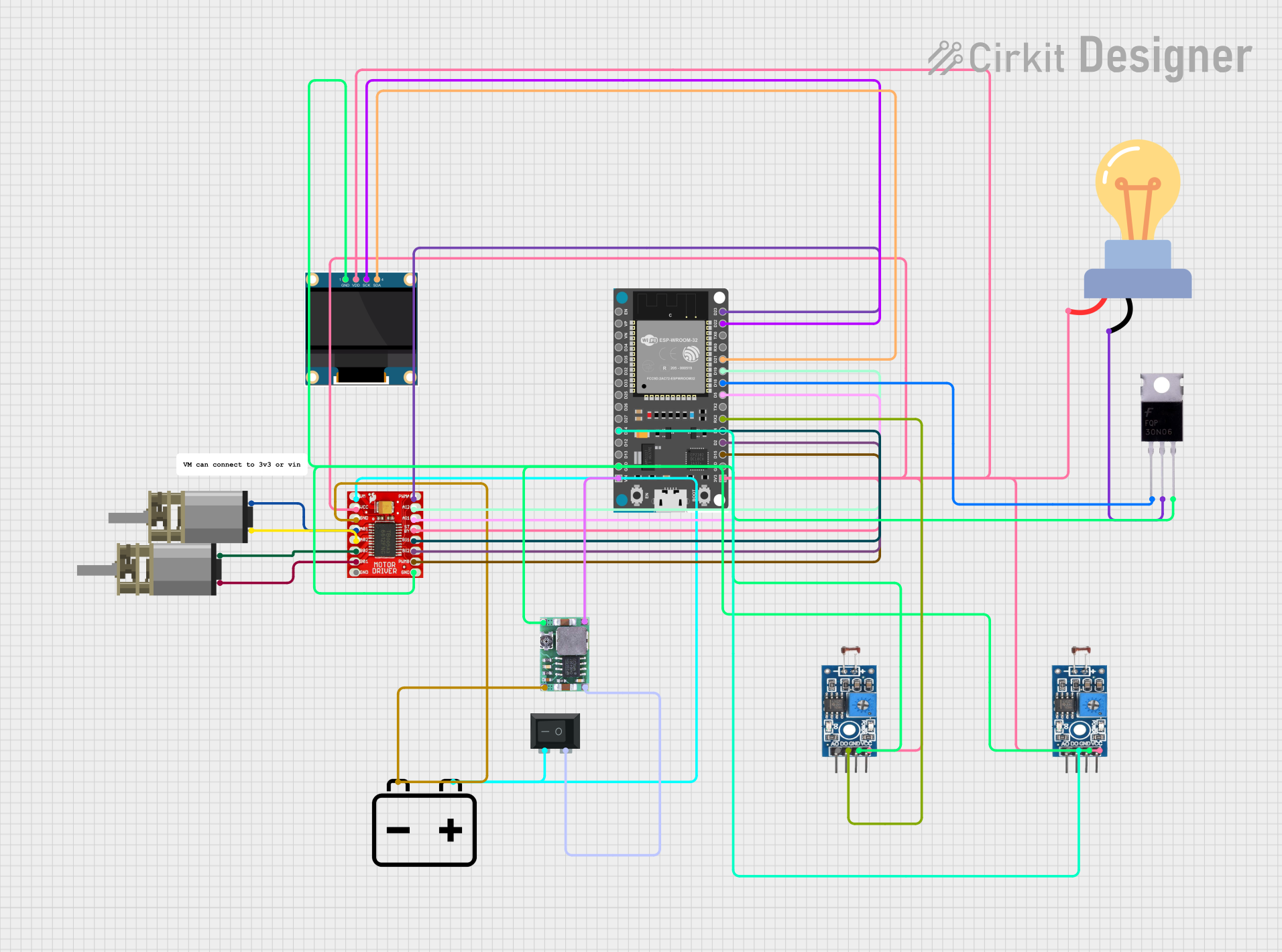
 Open Project in Cirkit Designer
Open Project in Cirkit Designer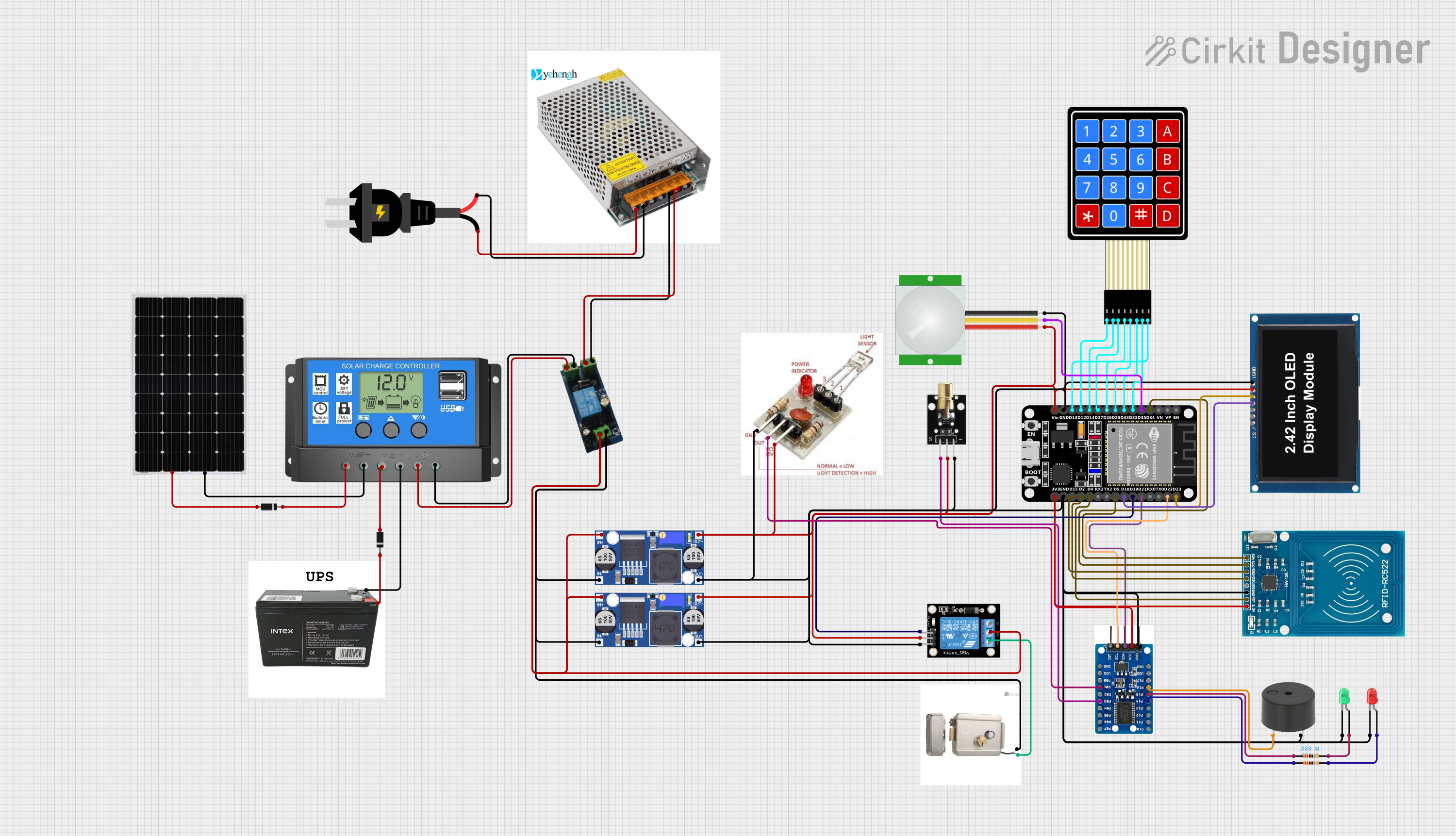
 Open Project in Cirkit Designer
Open Project in Cirkit Designer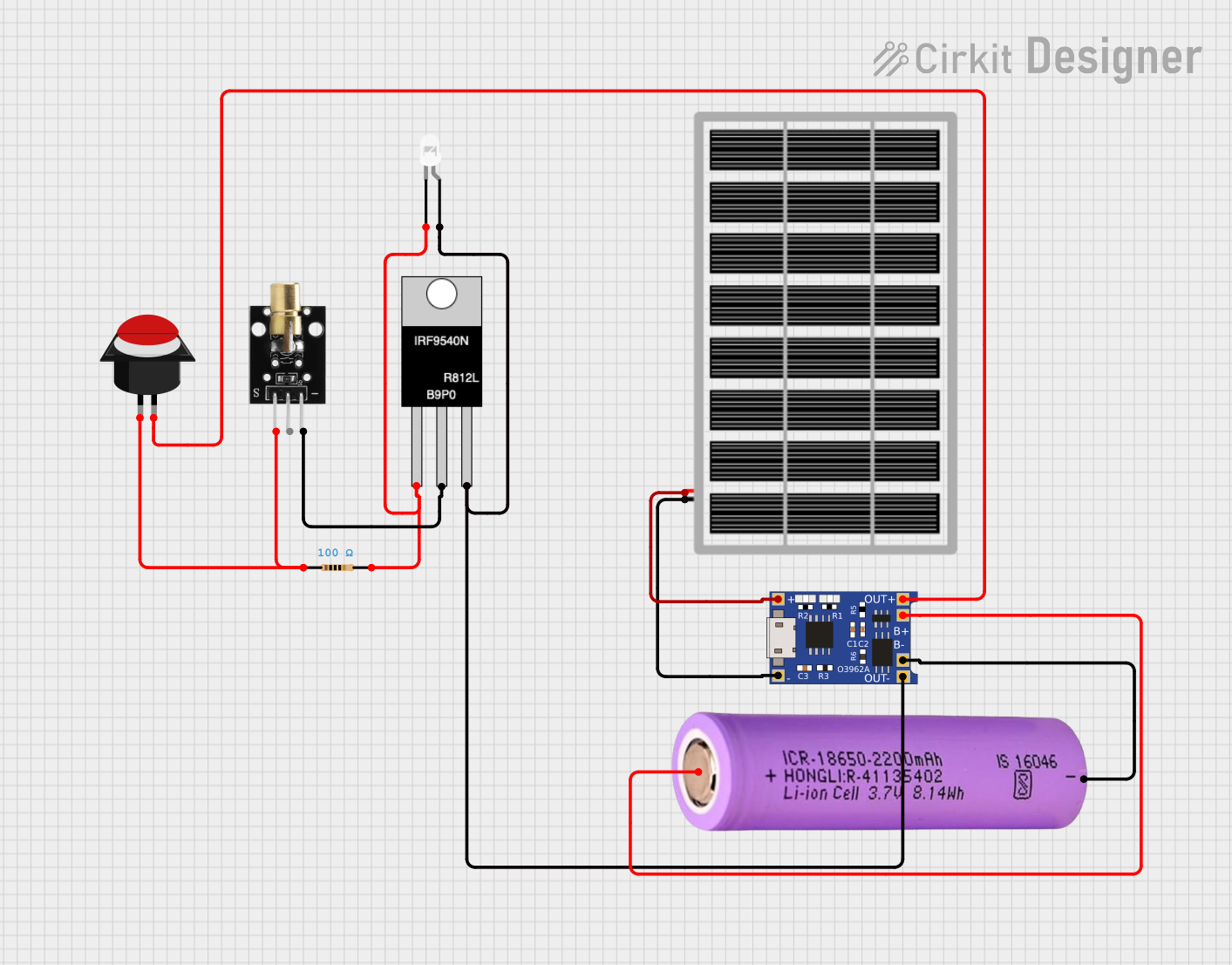
 Open Project in Cirkit Designer
Open Project in Cirkit DesignerExplore Projects Built with photon 2

 Open Project in Cirkit Designer
Open Project in Cirkit Designer
 Open Project in Cirkit Designer
Open Project in Cirkit Designer
 Open Project in Cirkit Designer
Open Project in Cirkit Designer
 Open Project in Cirkit Designer
Open Project in Cirkit DesignerCommon Applications and Use Cases
- Home Automation: Control and monitor home appliances remotely.
- Industrial IoT: Collect and analyze data from industrial equipment.
- Wearable Devices: Develop smart wearable gadgets with internet connectivity.
- Environmental Monitoring: Track environmental parameters like temperature, humidity, and air quality.
- Smart Agriculture: Monitor and manage agricultural conditions and equipment.
Technical Specifications
Key Technical Details
| Specification | Value |
|---|---|
| Microcontroller | ARM Cortex-M4 |
| Clock Speed | 120 MHz |
| Flash Memory | 1 MB |
| RAM | 256 KB |
| Wi-Fi Module | 802.11 b/g/n |
| Operating Voltage | 3.3V |
| Input Voltage | 3.6V to 5.5V |
| Digital I/O Pins | 18 |
| Analog Input Pins | 8 |
| PWM Pins | 8 |
| Communication | UART, SPI, I2C |
| Cloud Connectivity | Particle Cloud, REST API, Webhooks |
Pin Configuration and Descriptions
| Pin Number | Pin Name | Description |
|---|---|---|
| 1 | VIN | Input voltage (3.6V to 5.5V) |
| 2 | GND | Ground |
| 3 | 3V3 | 3.3V output |
| 4 | A0 | Analog input 0 |
| 5 | A1 | Analog input 1 |
| 6 | A2 | Analog input 2 |
| 7 | A3 | Analog input 3 |
| 8 | A4 | Analog input 4 |
| 9 | A5 | Analog input 5 |
| 10 | D0 | Digital I/O 0 |
| 11 | D1 | Digital I/O 1 |
| 12 | D2 | Digital I/O 2 |
| 13 | D3 | Digital I/O 3 |
| 14 | D4 | Digital I/O 4 |
| 15 | D5 | Digital I/O 5 |
| 16 | D6 | Digital I/O 6 |
| 17 | D7 | Digital I/O 7 |
| 18 | RX | UART Receive |
| 19 | TX | UART Transmit |
| 20 | SCL | I2C Clock |
| 21 | SDA | I2C Data |
| 22 | WKP | Wake-up pin |
| 23 | RST | Reset |
Usage Instructions
How to Use the Component in a Circuit
Powering the Photon 2:
- Connect the VIN pin to a power source (3.6V to 5.5V).
- Connect the GND pin to the ground of the power source.
Connecting to Wi-Fi:
- Use the Particle mobile app or Particle CLI to configure Wi-Fi credentials.
Programming the Photon 2:
- Use the Particle Web IDE, Particle Workbench, or Particle CLI to write and upload code.
Basic Circuit Example:
- Connect an LED to pin D0 with a current-limiting resistor.
- Connect the other end of the LED to GND.
Important Considerations and Best Practices
- Power Supply: Ensure a stable power supply within the specified voltage range to avoid damaging the Photon 2.
- Wi-Fi Signal: Place the Photon 2 within a good Wi-Fi signal range for reliable connectivity.
- Cloud Connectivity: Utilize Particle Cloud services for remote management and OTA updates.
- Pin Usage: Avoid exceeding the current limits of the I/O pins to prevent damage.
Example Code for Arduino UNO
// This example code demonstrates how to blink an LED connected to pin D0
// on the Photon 2. The LED will turn on for one second and off for one second.
void setup() {
// Initialize pin D0 as an output
pinMode(D0, OUTPUT);
}
void loop() {
// Turn the LED on (HIGH is the voltage level)
digitalWrite(D0, HIGH);
// Wait for a second
delay(1000);
// Turn the LED off by making the voltage LOW
digitalWrite(D0, LOW);
// Wait for a second
delay(1000);
}
Troubleshooting and FAQs
Common Issues Users Might Face
Wi-Fi Connection Issues:
- Solution: Ensure the Wi-Fi credentials are correct and the signal strength is adequate. Use the Particle mobile app to reconfigure Wi-Fi settings if needed.
Power Supply Problems:
- Solution: Verify that the input voltage is within the specified range (3.6V to 5.5V). Check for loose connections or faulty power sources.
Code Upload Failures:
- Solution: Ensure the Photon 2 is in DFU mode (blinking yellow) before uploading code via Particle CLI. Check USB connections and drivers.
Unresponsive Device:
- Solution: Perform a factory reset by holding the SETUP button and tapping the RESET button until the LED blinks white, then release the SETUP button.
Solutions and Tips for Troubleshooting
- Check Connections: Ensure all connections are secure and correctly oriented.
- Use Serial Monitor: Utilize the serial monitor for debugging and monitoring the device's status.
- Firmware Updates: Keep the device firmware updated to the latest version for improved performance and bug fixes.
- Community Support: Leverage the Particle community forums for additional support and troubleshooting tips.
By following this documentation, users can effectively utilize the Photon 2 for their IoT projects, ensuring reliable performance and seamless integration with various applications.